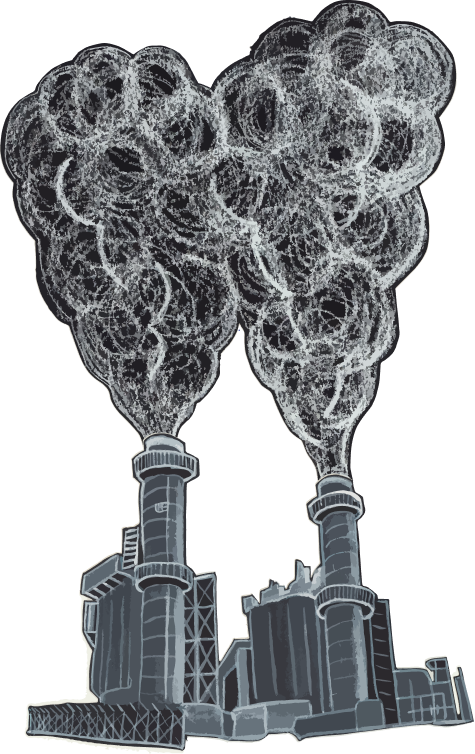Oregon
Back to mapTo get to zero by 2050, Oregon must cut climate pollution by
1.9 million metric tons of CO2 equivalent a year.
Emissions in Oregon
Million metric tons of carbon dioxide equivalent (MMTCO2e) emissions
Note: Grey area indicates missing data due to processing delays.
Source: WRI, Mar 2021
This is how we're going to do it.
Source: WRI, Mar 2021
- Boilers and furnaces with heat pumps
- Gas stoves with induction ranges
- No-till farming to keep CO2 in the soil
- Capturing methane leaks from landfills
- Capturing CO2 to make emissions-free concrete
- Burning green hydrogen to make emissions-free steel
- Plugging methane leaks from gas pipelines
Decarbonize Our Buildings
10% of Oregon's climate pollution comes from buildings.
We burn fossil fuels to heat our air, water, and food.
To cut this pollution...
Let's electrify our heat!
We'll replace...
...in all of Oregon's 1.9 million buildings.
In fact, 55% of buildings in Oregon are already fossil fuel free!
That means we only need to electrify the remaining 844,000 dirty buildings in Oregon. That's around 30,000 per year.
Source: Microsoft, Mar 2021; NREL, Dec 2021Electrifying all buildings cuts 10% of the pollution.
Decarbonize Our Transport
41% of Oregon's pollution comes from cars, trucks, trains, and planes.
But mostly from cars.
To cut this pollution,
your next car must be electric.
Or consider going car-free with public transit, bikes/e-bikes, car share, or other alternatives!
There are 1.4 million vehicles in Oregon and 23,000 are already electric (1.6% of the total).
We need to electrify (or replace) the remaining 1.4 million gas-powered vehicles. That's around 51,000 a year.
Source: DOT, Feb 2021Electrifying all transportation cuts 41% of the pollution.
Decarbonize Our Power
16% of Oregon's pollution comes from burning coal, gas, and oil to make power.

To cut this pollution...
Put solar panels on your roof!
Then, we'll replace all fossil fuel power plants with solar and wind farms.

...and find good jobs for those workers.
Current Fossil Fuel Power Plants in Oregon
1 coal plant
Boardman
Morrow County
642 MW
12 gas plants
Hermiston Power Plant
Umatilla County
689 MW
Hermiston
Umatilla County
621 MW
Beaver
Columbia County
611 MW
Klamath Cogeneration Project
Klamath County
502 MW
Carty Generating Station
Morrow County
500 MW
Port Westward
Columbia County
483 MW
Coyote Springs
Morrow County
296 MW
Coyote Springs II
Morrow County
287 MW
Port Westward Unit 2
Columbia County
226 MW
Klamath Generation Peakers
Klamath County
118 MW
Univ of Oregon Central Power Station
Lane County
11 MW
Oregon State University Energy Center
Benton County
7 MW
But wait!
It's not enough to replace our power plants with wind and solar farms.
To power our electric cars and buildings, we need two times the electricity we have today.
In all, we'll need to build 3,000 Megawatts of wind power and 3,000 Megawatts of solar power.
Since Oregon already has 10 Megawatts of wind and 0 Megawatts of solar, that's 3,000 Megawatts of wind power we need to build and 3,000 Megawatts of solar power. That's around 123 Megawatts of wind power and 114 Megawatts of solar power a year.
Source: EIA, Apr 2022Decarbonizing all dirty power cuts 16% of the pollution.
And gives us zero-emissions power we need to eliminate pollution from buildings and cars!
Other Emissions
The last 33% of Oregon's climate pollution comes from other sources...
This includes farming, landfills, industry, and leaks from gas pipelines.
There's no one solution to solve these problems, but there are lots of great ideas:
Ready to do your part?
Learn how to electrify your own machines and pass local policy to electrify the rest
Take Action